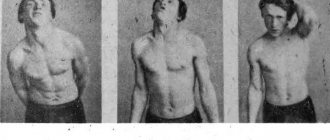What is a traumatic brain injury?
TBI is any head injury accompanied by disruption of the normal functioning of the body. Minor injuries are considered the least severe: cuts, local bruises.
Severe brain injuries include:
- Fractures of the skull.
- Contusion.
- Concussions.
- Intracranial hemorrhage.
The danger of the pathology is explained by the high probability of a violation of the integrity of the brain. This can lead to death, disability, and other serious consequences.
Treatment of severe injuries
The most severe TBIs are cerebral compression, diffuse axonal injury, brainstem ruptures, and intracranial hemorrhage. It is with such defeats that the count goes not only on hours and, but also on minutes. The life of the patient and whether he will be able to lead his usual lifestyle depends on how quickly treatment is started in the acute period. Many patients with severe TBI remain disabled for life.
The patient’s condition depends not only on the nature of the injury, but also on secondary injuries: hypoxia, hypothermia, intracranial pressure, spasms, convulsions, and infection. That is why medical measures are aimed at eliminating these symptoms.
Treatment methods in the acute period:
Restoration of respiratory function. Foreign bodies located in the nasopharynx are removed, then the patient requires artificial ventilation.- If there is a risk of developing hydrocephalus or cerebral edema, cerebrospinal fluid is removed through a puncture in the spinal canal.
- The use of diuretics and hypertonic solutions followed by catheterization of the bladder.
- To prevent the development of cerebral edema and reduce it, treatment with steroid hormones is carried out.
- Body temperature is artificially reduced to 28-30 degrees. This method reduces the brain's response to injury, which helps preserve more tissue. Lowering the temperature in the first hours reduces the risk of death and allows the body to restore its protective functions.
- In severe cases, emergency surgery is necessary. Neurosurgery identifies the main reasons for intervention: rapidly increasing swelling, profuse hemorrhage, ruptured veins, skull fracture and other life-threatening conditions.
After the acute condition is relieved, patients who have suffered severe injuries are prescribed medications to normalize blood circulation in the vessels of the brain and restore lost functions. The most effective drugs are Cortexin, Cerebrolysin, Mexidol and Actovegin. These remedies not only nourish brain tissue, but also relieve the effects of hypoxia, restore speech and other cognitive functions.
After discharge, patients who have suffered severe brain injury undergo a long course of rehabilitation, which includes: exercise therapy, electrophoresis, magnetic therapy, acupuncture, massage and other measures to restore lost functions.
Classification of TBI
There are different approaches to the classification of traumatic brain injuries. The criteria for dividing into types are the severity of TBI and the presence of penetrating wounds. Injuries to the skull do not always result in brain injury. This indicates the need for competent recognition of symptoms in order to determine the severity of the pathology.
Classification of traumatic brain injuries according to Gaidar
Allows you to accurately determine the mechanism of head injury. At the same time, the severity of the condition is assessed by visual assessment of the affected area.
The presented classification of traumatic brain injuries includes:
- GM bruises (mild, moderate, severe).
- Concussions.
- Compression of the brain (with or without bruise, hematomas, edema).
Associated conditions are also identified:
- Fractures of the skull bones.
- Intrathecal hemorrhages.
- Violation of cerebrospinal fluid pressure.
For successful classification, the patient’s general condition, concomitant pathologies, and disorders of vital processes are taken into account.
Classification according to the degree of damage to the skull bones
With head injuries, there is always the possibility of hemorrhage and infection.
In view of this, the following types of traumatic brain injuries are distinguished:
- Closed craniocerebral injury. A pathology in which the integrity of the soft tissues of the head is not compromised. This group includes TBI in which there are superficial injuries: abrasions, cuts, but the bone tissue is not affected. The most common closed TBI is a concussion.
- Open TBI. It is a pathology in which the integrity of the skull is disrupted, most often fractures of the vault and base. An open cranial lesion poses a great danger due to possible bleeding, infectious infection, and tissue damage from bone fragments.
Open TBIs can be penetrating or non-penetrating. When penetrating, the brain tissue remains unaffected, while penetrating is accompanied by ruptures or other lesions.
Classification by severity
The intensity of the pathology directly depends on the strength of the influencing mechanical factors. This affects the severity of the victim’s condition and the possible outcome of the pathology in the future.
Taking into account the degree of severity, the following are distinguished:
- Heavy. Characterized by significant damage to hard and soft tissues. The patient is in serious condition. Symptoms characteristic of coma and signs of death appear. Severe traumatic brain injuries include aggravated forms of fractures, bruises, compression, and internal hemorrhages.
- Average. Accompanied by manifestations of moderate severity. Provoking factors include bruises, concussions, bone cracks, and bleeding.
- Lungs. The lesion occurs with low intensity symptoms. There are no aggravating manifestations. Mild traumatic brain injuries include uncomplicated concussions and bruises.
Interesting: Providing first aid for TBI
The most common causes of concussion
- Road traffic accident. This cause accounts for about half of all fatal cases of traumatic brain injury. Many of those who survive become disabled.
- In production. This is one of the most common causes of TBI (traumatic brain injury). It can be caused by just hitting your head on a hard surface. There can be, as in an accident, different types of these injuries: closed and open. They can also vary in severity, forms, and other indicators.
- Sports. Absolutely any strong blow to the head on a hard surface can cause a concussion. Can there be a concussion from being hit by a ball? The answer is unequivocal - yes.
- Criminal case. For this reason, a person must be hit on the head in order for him to receive a TBI.
Can you have a TBI without hitting your head? Maybe. As is the case with a shock wave, which can cause a TBI if a person simply slips and falls on ice.
Attention! Parents of teenage children need to be especially careful. Especially boys. They are more likely than girls to get hit on the head with books or even briefcases, in particular from their classmates. Also, boys more often take part in fights, ride on railings, and demonstrate their dexterity and courage in various other ways.
The problem is that this rarely happens without landing hard and hitting your head. You should be especially attentive to a teenager’s complaints of headache and/or dizziness.
Causes of traumatic brain injuries
Pathologies associated with skull damage have a multifactorial etiology. Most often they are obtained due to mechanical impact on the head.
Possible reasons:
- Beats
- Falls from height
- Penetrating injuries (including due to gunshot wounds)
- Compression of the brain (for example, from a traffic accident)
The reasons why head trauma occurs include factors that have a detrimental mechanical effect. The skull is one of the strongest bones in the body, but its integrity is often compromised at home or at work.
Criteria for satisfactory condition
A satisfactory condition is typical mainly for mild closed craniocerebral lesions. The main criterion is the absence of intense symptoms of TBI.
Auxiliary evaluation criteria:
- No impairment of consciousness
- Vital signs within normal limits
- Absence or low severity of focal symptoms
- There are no aggravating neurological symptoms
Compliance with the listed criteria indicates that the TBI is minor. There is no danger to the patient’s life, and the ability to work will be restored in a short period of time, in case of proper therapy.
Symptoms of head injury
Despite the fact that a head injury of any severity and under any circumstances requires urgent consultation with a doctor, knowledge of its symptoms and treatment is mandatory for every educated person.
Symptoms of head injury, like any other pathology, form syndromes - complexes of signs that help the doctor determine the diagnosis. The following syndromes are classically distinguished:
General cerebral symptoms and syndromes. This symptom complex is characterized by:
- loss of consciousness at the time of injury;
- headache (stabbing, cutting, squeezing, girdling);
- disturbance of consciousness some time after the injury;
- nausea and/or vomiting (possible unpleasant taste in the mouth);
- amnesia - loss of memories of incidents that preceded or followed the incident, or both (respectively, retrograde, anterograde and retroanterograde types of amnesia are distinguished);
Focal symptoms are characteristic of local (focal) lesions of brain structures. As a result of injury, the frontal lobes of the brain, temporal, parietal, occipital lobes, as well as structures such as the thalamus, cerebellum, brainstem, and so on can be damaged.
The specific localization of the lesion always causes certain symptoms, but it should be taken into account that external (noticeable) violations of the integrity of the cranium may not be observed.
Thus, a fracture of the temporal bone pyramid may not always be accompanied by bleeding from the auricle, but this does not exclude the possibility of damage at the topical (local) level. One of the variants of these manifestations may be paresis or paralysis of the facial nerve on the injured side.
Grouping of individual characteristics
Classification focal signs are combined into the following groups:
- visual (if the occipital area is affected);
- auditory (with damage to the temporal and parietotemporal areas);
- motor (with damage to the central parts, up to severe motor impairment);
- speech (Wernicke and Broca's center, frontal cortex, parietal cortex);
- coordinator (with damage to the cerebellum);
- sensitive (if the postcentral gyrus is damaged, sensitivity disorders are possible).
It is worth noting that only a certified specialist who follows the classic examination algorithm is able to accurately determine the topic of focal lesions and their impact on the future quality of life, so never neglect to seek help in case of a head injury!
Autonomic dysfunction syndrome. This symptom complex occurs due to damage to the autonomic (automatic) centers. Manifestations are extremely variable and depend solely on the specific center that was damaged.
In this case, a combination of symptoms of damage to several systems is often observed. Thus, changes in breathing rhythm and heart rate are possible at the same time.
The following types of autonomic disorders are classically distinguished:
- metabolic dysregulation;
- changes in the functioning of the cardiovascular system (bradycardia is possible);
- dysfunction of the urinary system;
- changes in the functioning of the respiratory system;
- gastrointestinal disorders.
- solutions to your altered state of mind.
Mental disorders that are characterized by changes in the human psyche.
Most often this is:
- emotional disturbances (depression, manic agitation);
- twilight stupefaction;
- impairment of cognitive functions (decreased intelligence, memory);
- personality changes;
- the occurrence of productive symptoms (hallucinations, delusions of various types);
- lack of critical
Please note that the symptoms of TBI can be either pronounced or invisible to a layperson.
In addition, some symptoms may occur a certain time after the injury, so if you receive a head injury of any severity, you should consult a doctor!
Criteria for a moderate condition
Indicates manifestations characteristic of closed lesions and moderate TBI. The patient's condition has worsened compared to satisfactory, but severe aggravated symptoms do not appear.
Criteria for evaluation:
- Consciousness without changes, less often with signs of stunning
- Vital signs are not affected
- Minor bradycardia is acceptable
- Focal symptoms present
Closed or open TBI that meets the described criteria does not pose a threat to life. The prognosis, with proper therapy, is favorable.
Criteria for severe condition
Characteristic of complicated brain injuries. The patient's condition deteriorates significantly compared to normal. In most cases, hospitalization is required.
Main criteria:
- Impaired consciousness (stupor, stupor)
- Deviations of 1 or 2 vital signs from the norm
- The occurrence of focal symptoms (hemispheric, craniobasal or brainstem symptoms)
Compliance with this condition indicates a threat to life. The likelihood of survival depends on the duration and quality of care. The prognosis is poor due to the need for long-term recovery.
Criteria for extremely serious condition
Characterizes a condition that occurs with severe traumatic brain injury. There is a high probability of death. The prognosis for the patient's recovery is unfavorable. This is due to severe brain damage that leads to disability.
Criteria:
- The patient is unconscious, in a coma
- Significant deviation of vital signs from normal
- Intense stem symptoms
- Craniobasal and hemispheric manifestations are pronounced
Criteria for terminal condition
The terminal phase is accompanied by manifestations in which the likelihood of survival is minimal. Death can occur immediately after injury.
Terminal criteria:
- The patient is in a coma
- Critical deviations in life processes are noted
- Brainstem symptoms are manifested by a complete absence of reflexes
Brain concussion
The most common injury among possible traumatic brain injuries (up to 80% of all TBIs).
Clinical picture
Depression of consciousness (to the level of stupor) during a concussion can last from several seconds to several minutes, but may be absent altogether. Retrograde, congrade and antegrade amnesia develops for a short period of time. Immediately after a traumatic brain injury, a single vomiting occurs, breathing becomes more frequent, but soon returns to normal. Blood pressure also returns to normal, except in cases where the medical history is aggravated by hypertension. Body temperature during a concussion remains normal. When the victim regains consciousness, there are complaints of dizziness, headache, general weakness, cold sweat, flushing of the face, and tinnitus. The neurological status at this stage is characterized by mild asymmetry of skin and tendon reflexes, small horizontal nystagmus in the extreme abductions of the eyes, and mild meningeal symptoms that disappear during the first week. With a concussion as a result of a traumatic brain injury, after 1.5 - 2 weeks, an improvement in the patient’s general condition is noted. It is possible that some asthenic phenomena may persist.
Diagnosis
Recognizing a concussion is not an easy task for a neurologist or traumatologist, since the main criteria for diagnosing it are the components of subjective symptoms in the absence of any objective data. It is necessary to familiarize yourself with the circumstances of the injury, using the information available to witnesses to the incident. Of great importance is an examination by an otoneurologist, with the help of which the presence of symptoms of irritation of the vestibular analyzer in the absence of signs of prolapse is determined. Due to the mild semiotics of a concussion and the possibility of a similar picture arising as a result of one of many pre-traumatic pathologies, special importance in diagnosis is given to the dynamics of clinical symptoms. The justification for the diagnosis of “concussion” is the disappearance of such symptoms 3-6 days after receiving a traumatic brain injury. With a concussion, there are no fractures of the skull bones. The composition of the cerebrospinal fluid and its pressure remain normal. CT scan of the brain does not detect intracranial spaces.
Treatment
If a victim with a traumatic brain injury has come to his senses, first of all he needs to be given a comfortable horizontal position, his head should be slightly raised. A victim with a traumatic brain injury who is in an unconscious state must be given the so-called. The “saving” position is to lay him on his right side, his face should be turned to the ground, his left arm and leg should be bent at a right angle at the elbow and knee joints (if fractures of the spine and limbs are excluded). This position promotes the free passage of air into the lungs, preventing the tongue from retracting and vomit, saliva and blood from entering the respiratory tract. Apply an aseptic bandage to bleeding wounds on the head, if any.
All victims with traumatic brain injury are necessarily transported to a hospital, where, after confirmation of the diagnosis, they are placed on bed rest for a period that depends on the clinical characteristics of the course of the disease. The absence of signs of focal brain lesions on CT and MRI of the brain, as well as the patient’s condition, which allows one to refrain from active drug treatment, allows us to resolve the issue in favor of discharging the patient for outpatient treatment.
For a concussion, overactive drug treatment is not used. Its main goals are to normalize the functional state of the brain, relieve headaches, and normalize sleep. For this purpose, analgesics and sedatives (usually in tablet forms) are used.
Symptoms of traumatic brain injury
The clinical picture and symptoms of traumatic brain injury depend on the type of TBI, severity, period of TBI, presence of penetrating injuries and other factors.
Periods:
- Spicy. Depending on the severity, it ranges from 2 to 10 weeks. The period reflects the time interval between damage to the skull and stabilization of basic functions.
- Intermediate. Lasts from 6 months to 1 year. Accompanied by regeneration and resorption of damaged areas, activation of compensatory processes in order to restore the functions of the brain.
- Remote. The final period of recovery after acute traumatic brain injury, lasting 3 years.
Brain concussion
The most common TBI (up to 80% of cases). It is characterized by a short-term disruption of brain function due to displacement within the skull. Sometimes it occurs in an unexpressed asymptomatic form.
Interesting: Severity, symptoms and consequences of brain contusion
Main symptoms:
- Fatigue, increased fatigue
- Cephalgia
- Brief loss of consciousness after injury
- Short-term amnesia
- Vomiting once
- Rapid breathing
- Drowsiness
The recovery period, in the absence of aggravating factors, lasts about 2 weeks. During this period, side symptoms are possible: fever, nausea with vomiting, lack of appetite, dizziness.
Brain contusion (CBM)
This is a head injury that damages tissue. A distinctive feature is the presence of a focus of dead nerve tissue. Most often occurs in the temporal, frontal or occipital lobes.
Symptoms:
- Loss of consciousness (up to 30-40 minutes)
- Moderate or intense cephalalgia
- Nausea
- Dizziness
- Memory loss
- Severe breathing problems
- Increase in blood pressure
The duration of symptoms depends on the severity of the process. In an uncomplicated course, the manifestations disappear completely after 2-3 weeks.
Brain compression
It is a process accompanying TBI, in which tissues are compressed. As a rule, this occurs due to hematomas, against the background of increased cerebrospinal fluid pressure. This complication is noted in 55% of cases.
Symptoms:
- Impaired consciousness
- Cephalgia
- Frequent vomiting
- Impaired coordination of movements
- Mental excitement
- Convulsions
- Reflex activity disorders
- Bradycardia
- Increase in blood pressure
- Ophthalmological disorders
The danger is that the disorder is constantly progressing. As a result, the risk of fatal consequences increases. The patient requires urgent hospitalization.
Classification of cerebral hemorrhages by location
Depending on the location, in world medical practice there are five types of cerebral hemorrhages.
- Subdural hemorrhage - blood leaks under the dura mater of the brain.
- Epidural - the vessel is torn between the outer meninges and the bone of the skull.
- Subarachnoid - blood flows into the cavity with the cerebrospinal fluid.
- Intracerebral (intracerebral) - hemorrhage in the deep layers of the medulla.
- Ventricular (ventricular) - bleeding in one of the lateral ventricles of the brain.
Examination of victims with traumatic brain injury
Correct diagnosis is an important process that influences further treatment. Initially, if the victim is conscious, the cause and circumstances of the injury are clarified. Sometimes a patient experiences amnesia after a TBI, causing them to not remember the fall or impact. Therefore, you should examine the head to detect signs of damage.
Orbital hemorrhages, nosebleeds, and ear bleeds indicate a skull fracture. Leakage of cerebrospinal fluid is noted. To make a diagnosis, it is important to determine the state of consciousness. The most severe condition is considered to be coma, in which the victim does not respond to stimuli and there are no signs of consciousness.
Additional examinations in severe conditions
Auxiliary diagnosis of skull trauma is required in case of aggravated symptoms. If the patient has signs of coma, depressed consciousness, convulsions, manifestations that indicate internal hemorrhages, additional examination is necessary.
The following methods are used in neurology:
- Tomography methods
- Encephalography
- ICP measurement
- Visual assessment of cranial injury
- Checking the respiratory tract
- X-ray of the spine
Based on the examination results, a diagnosis is made and appropriate therapy is prescribed.
Treatment
Victims are prescribed comprehensive treatment for traumatic brain injury. The nature of therapeutic procedures directly depends on the patient’s condition. Minor injuries are treated on an outpatient basis, but subject to prior approval from a physician. For moderate and severe injuries, hospitalization is required, since such treatment after TBI requires constant monitoring.
Help before doctors arrive
The prognosis for recovery directly depends on the quality of pre-medical care provided. First of all, the victim needs to call an ambulance. It is permissible to transport independently only in case of mild forms of pathology.
If the patient is unconscious, first check the airway. If necessary, they are cleaned manually. It is recommended to lay the patient on his side (opposite to the site of injury), so that when vomiting, the masses can freely leave the oral cavity.
If bleeding occurs, the patient is bandaged. It is not recommended to moisten with antiseptic agents, but only apply to the wound to stop blood loss.
If concurrent spinal injury is suspected, the patient should be immobilized. Giving medications after a TBI is prohibited so as not to affect the symptoms.
When is treatment exclusively in a hospital setting necessary?
Any severe traumatic brain injury requires hospitalization. The only exceptions are cases of mild closed injuries in which there is no threat to life.
Interesting: Tablets for concussions in adults
Hospitalization is needed for the following symptoms:
- Oppression of consciousness
- Severe focal symptoms (convulsions, paralysis, reflex disorders)
- Open fractures
- Bleeding from the ears, nose
- Epileptic seizure
- Prolonged loss of consciousness
- Long-term amnesia
The listed manifestations indicate a high probability of negative consequences of a head injury. Therefore, the patient should remain under medical supervision until complete recovery.
In adults
The first signs of a concussion are clear. But, as practice shows, defining injury in this way is very problematic. Typically, diagnosis is based on a description of a citizen’s complaints. What can be observed some time after receiving a concussion?
There are many options for the development of events. In any case, with serious injuries, you will experience nausea and even vomiting. We are talking about repeated incidents. General weakness of the body, sleep disturbances (usually in the form of insomnia), pressure surges - all this also indicates a concussion.
Does your head hurt for a long time after hitting your head? Something like migraines has started? Is the temperature fluctuating? Does your face turn red for no reason? Then it's time to go to the doctor. You most likely have a concussion. It is noted that in adults, trauma is often manifested by memory loss (amnesia), sweating and tinnitus. It is possible that you will simply feel uncomfortable. Pay special attention to these signs.
Consequences of TBI
A common consequence of TBI is the failure of physiological processes and deviation of vital signs from the norm. This is due to damage to areas of the brain responsible for certain processes.
Possible complications of TBI:
- Respiratory failure
- Brain hypoxia
- Brain displacement
- Purulent-inflammatory processes
- Damage to nerve tissue by bone fragments
- Intracerebral hemorrhage
- Brain swelling
Complications of traumatic brain injury include infectious diseases: meningitis, encephalitis. The risk of developing an abscess cannot be excluded.
The consequences of a closed craniocerebral injury include swelling, internal hemorrhages, and compression of the brain due to impaired circulation of the cerebrospinal fluid.
Long-term consequences of open traumatic brain injury include disability, paralysis, ophthalmological disorders, and memory impairment. Mental disturbances and disorders are possible. In the absence of timely assistance, such injuries inevitably lead to death.
Prognosis of recovery for TBI of varying severity
The prognosis for recovery depends on the severity of the damage. With a favorable course, the risk of negative consequences of a head injury is reduced. This type of outcome is typical for mild to moderate cases, provided there are no complications or concomitant diseases.
Poor prognosis in case of edema or internal hemorrhage. In such cases, the likelihood of severe consequences after TBI increases, due to which the patient loses the ability to function normally. Recovery from severe injuries takes longer than from mild ones – up to 5 years.
Diagnosis of TBI
Diagnosis of craniocerebral lesions includes:
- Questioning the patient and witnesses to the incident. It is determined under what conditions the injury was received, whether it was the result of a fall, collision, or blow. It is important to find out whether the patient suffers from chronic diseases, whether there has been a previous head injury or surgery.
- Neurological examination for the presence of specific symptoms characteristic of damage to a particular area of the brain.
- Instrumental diagnostic methods. After a head injury, everyone without exception is prescribed an X-ray examination, and, if necessary, CT and MRI.
Rehabilitation
To reduce the severity of negative consequences after TBI and speed up the recovery of damaged areas, proper rehabilitation is necessary. The nature of the measures is prescribed taking into account the specific clinical picture of a particular patient.
General rehabilitation includes the following activities:
- Bed rest
- Elimination of physical activity
- Drug therapy
- Breathing exercises
- Proper nutrition
- Reducing brain load
- Restoring normal cerebrospinal fluid circulation
Various methods are used in treatment. Mild forms can be treated without drugs or procedures, by creating optimal conditions for recovery. Severe injuries are treated with medications, physiotherapeutic procedures, and surgery.
Long-term effects of traumatic brain injury can occur even in mild forms of injury. Therefore, pathology should be prevented through prevention.
Home Remedies
In case of traumatic brain injuries, treatment at home should be carried out only after visiting a doctor, and making sure that nothing threatens life and health. Principles of treatment at home:
- You can treat only mild concussions and bruises at home, or undergo recovery after discharge from the hospital.
- Maintain bed rest.
- Avoid vigorous activity.
- You cannot watch TV, read or use a computer for at least three days.
- Protect the patient from irritating factors: bright light, noise, unpleasant odors.
- Eliminate heavy foods from your diet, add more fresh vegetables, fruits, cottage cheese and juices.
- If symptoms of TBI occur or worsen: dizziness, nausea, convulsions, loss of consciousness, you should seek medical help.
Head injuries cannot be treated with folk remedies, but with their help you can eliminate unpleasant consequences, for example: dizziness, weakness, insomnia, lack of appetite. What you can take:
Take valerian, hops, elecampane, lemon balm and thyme in equal quantities. Infuse a spoonful of the mixture in half a liter of boiling water for 12 hours. Take a glass in the morning and evening.- An infusion prepared according to the same principle, but its composition includes: lavender, fireweed, rosemary and thyme, soothes and restores vascular tone.
- Restores the nervous system: pour a tablespoon of thyme into two glasses of boiling water, leave for 1-2 hours. Drink 100 ml before meals.
- A decoction of arnica and myrtle normalizes brain functions. Take a spoonful of each plant, pour a glass of boiling water and leave for several hours. Divide the resulting infusion into 4 doses.
We should not forget that even mild traumatic brain injuries require examination by a doctor, and after discharge, it is necessary to see a specialist 2 times a year. In childhood, after a TBI, the child is shown to a neurologist every 2 months to exclude residual effects.











